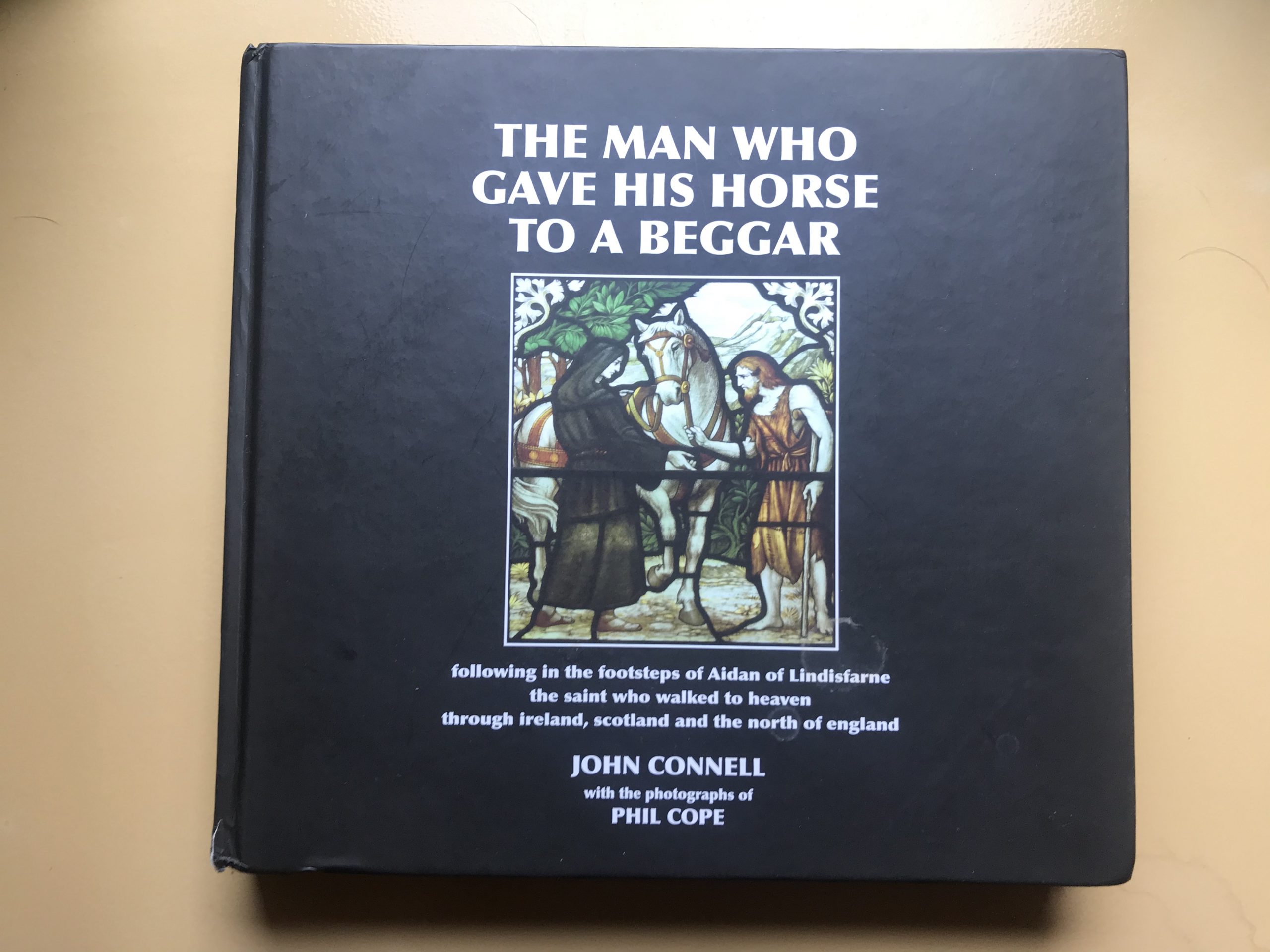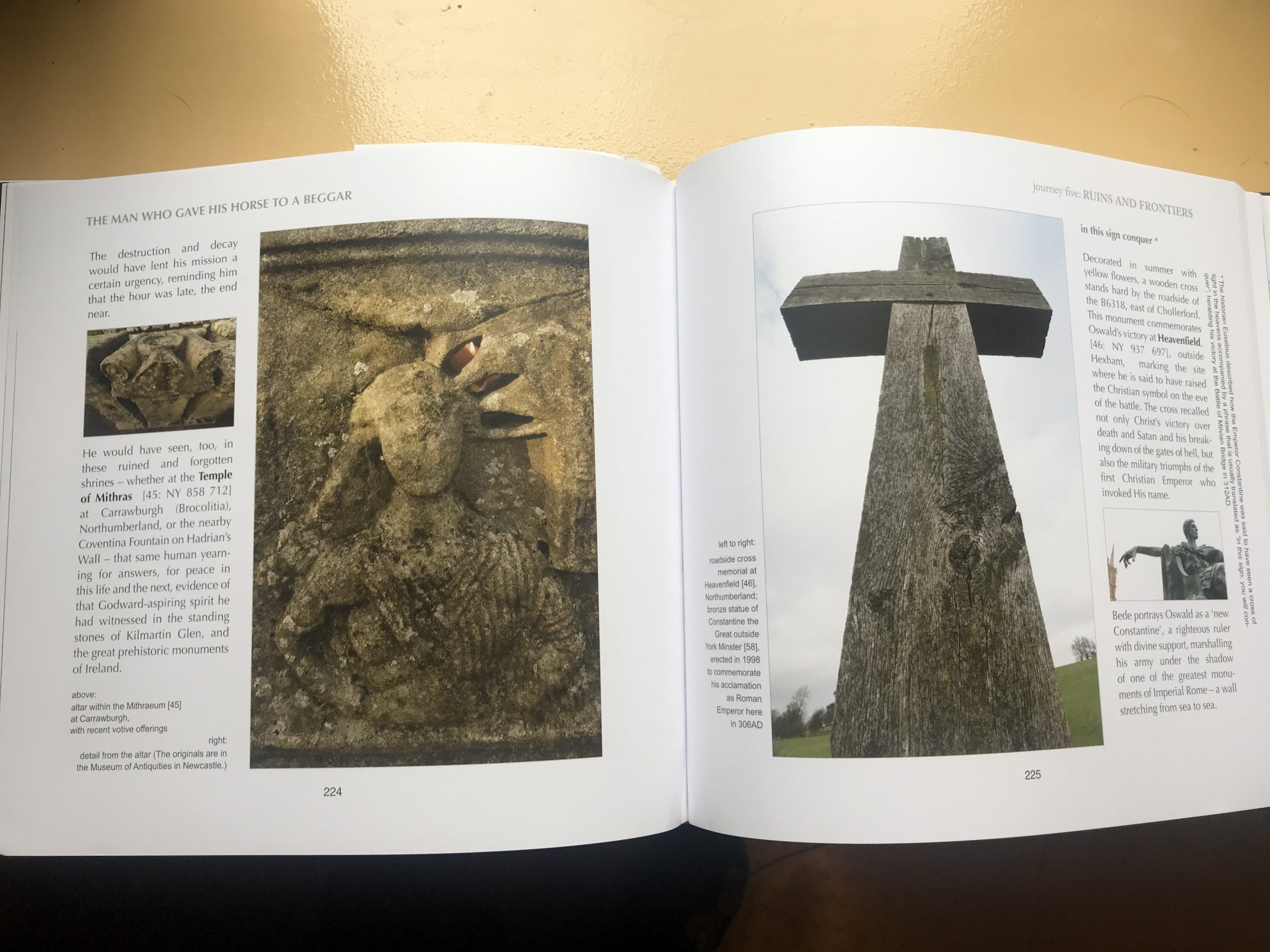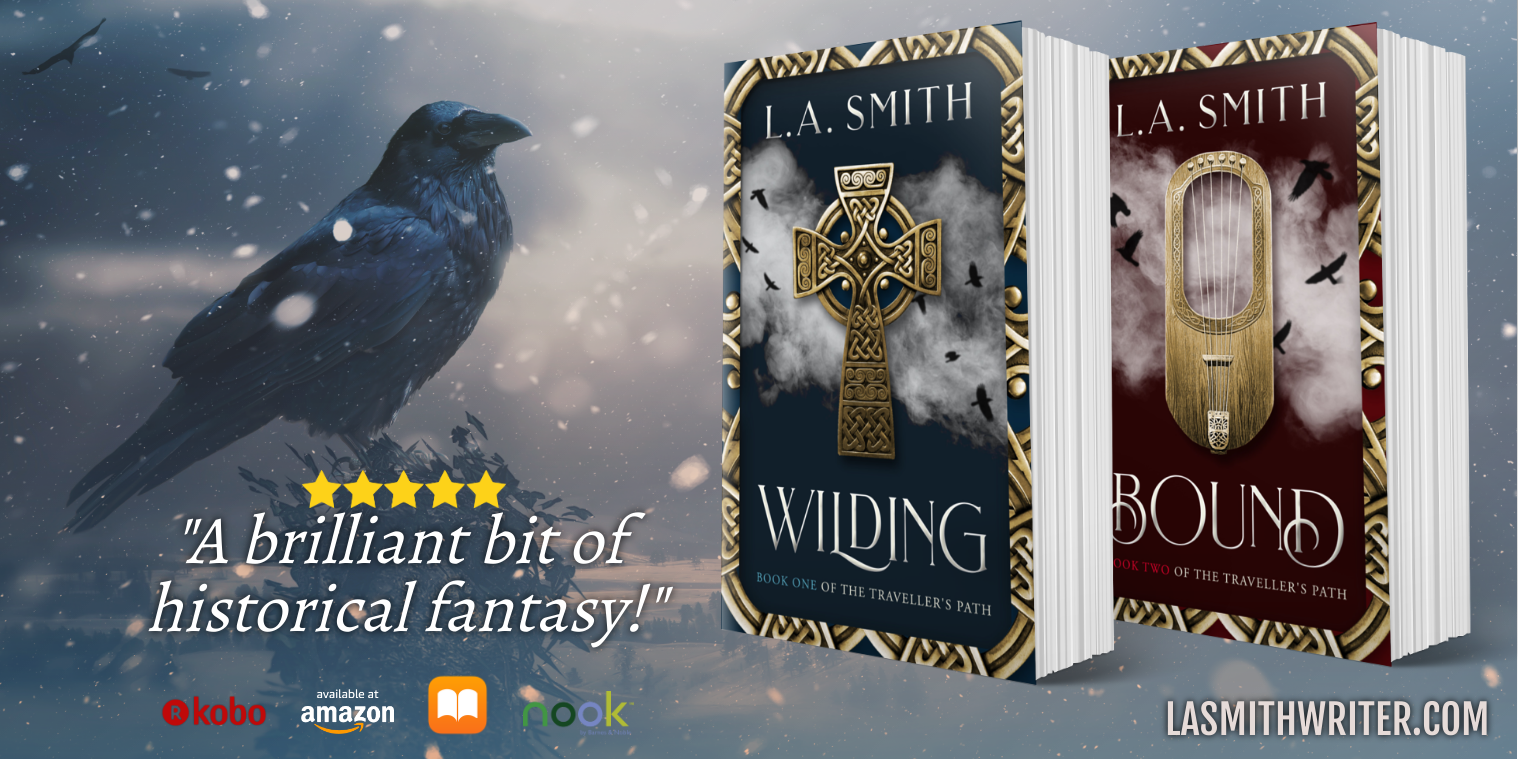
Newsletter
Yes! Send me my FREE short story collection and sign me up for those exclusive subscriber goodies!
We value your privacy, and will never spam you! View our privacy policy at lasmithwriter.com/privacy

Yes! Send me my FREE short story collection and sign me up for those exclusive subscriber goodies!
We value your privacy, and will never spam you! View our privacy policy at lasmithwriter.com/privacy
I had a really exciting thing happen to me earlier in the year. I won a contest sponsored by the Bamburgh Bones, the wonderful project created to tell the story of the people who were buried in a cemetery near Bamburgh in Anglo-Saxon times.*
The prize for winning was a copy of a new book, The Man Who Gave His Horse to a Beggar, by John Connell. I had seen this book being advertised during its launch and was really intrigued by it. To be the winner of one of three copies made me very happy, and as soon as I got it, I delved in.

The book is all about Aidan, Abbot of Lindisfarne, and is subtitled, Following in the steps of Aidan of Lindisfarne, the saint who walked to heaven through Ireland, Scotland, and the north of England. I have a huge appreciation for Aidan. Those of you who have read my books will see him appear in my books. My main character, Thomas, spends quite a bit of time at Lindisfarne and gets to know Aidan during his time in 7th-century Northumbria. So to win this book was such a treat!
Connell is a journalist and writer who lives in Northumberland. His bio says that he has been fascinated with the stories of the kings, saints, and warriors of that area since he was young. His book is a wonderful compilation of photographs, travel diary, and history as the author follows in the footsteps of Aidan from the saint’s home in Ireland to Northumbria and beyond.
Along the way we learn more about Aidan himself and the times in which he lived. Connell breaks up the book into six journeys: Little Fire (Ireland), Footprints in Stone (Scotland, northern England), Heartlands (Bamburgh, Lindisfarne, and the Farne Islands), Hinterlands (the Anglo-Scottish Borders), Ruins and Frontiers (Roman Wall country and beyond) and Legacy and Loss (Tyne and Wear, Durham and North Yorkshire). Each of these areas had a part in Aidan’s story. Paul Cope’s extensive photographs throughout help us to picture the locations, and a running fictional narrative sprinkled throughout the mainly non-fiction text brings us a little deeper into Aidan’s world. The title refers to a story that Bede tells about Aidan, in which King Oswine of Deira gifts Aidan a horse with regal fittings to aid in his missionary travels across England, but Aidan, when he comes across a beggar, gives him with his horse. Upset at this casual dismissal of the gift, the king confronts Aidan. As Bede tells it,
The King asked the bishop as they were going in to dine, ‘My Lord Bishop, why did you give away the royal horse which was necessary for your own use? Have we not many less valuable horses or other belongings which would have been good enough for beggars, without giving away a horse that I had specifically selected for your personal use?’ The bishop at once answered, ‘What are you saying, Your Majesty? Is this child of a mare more valuable to you than this child of God?’”
Suitably chastised, the king apologizes and vows never to question Aidan’s generosity again.

An example of some of the photos in this book.
One of the things I noticed when I first started doing researching Aidan for my books was that his contribution to English history seemed in my eyes to be much bigger than one would assume from his rather muted legacy. It was clear that he played a pivotal role in 7th-century England and yet, as Connell explains, often his part in history is eclipsed by those who came after. Particularly Cuthbert, whose legacy in many ways grew in proportion to the loss of Aidan’s.
The Man Who Gave a Horse to A Beggar does a good job of explaining this. We learn that one of the reasons why Aidan’s legacy became hidden in Cuthbert’s shadow was the rift between the Irish “Celtic” Church that Aidan represented and that of the Roman Church followed by Cuthbert and those who came after. Although both Churches agreed on the main points of doctrine, there were several practices and customs that separated them, and it became clear that one had to prevail. Shortly after Aidan died, the Synod of Whitby was convened to settle the question of which set of practices would be followed by all the churches of England, and the Celtic Church lost out to the Roman one. Aidan and those who followed the Irish Church’s methods of dating Easter, the style of the monk’s tonsure, and other practices were seen as almost heretical by the winners of this debate, and so the “winning” side got to work in promoting their saint, Cuthbert, as well as those who followed him. Aidan was quietly shuffled over to the side.
But thankfully, the Venerable Bede, although he was part of the Roman church, had a great affection for Aidan and some of the other Irish clergy, and so he gave a sympathetic slant to their stories in his Ecclesiastical History of the English People. Which was quite remarkable, on the face of it. Bede admired their tough, aesthetic spirituality, especially in comparison to some of the excesses he could see developing in his contemporary brethren. We owe a great deal of credit to Bede for keeping the story of Aidan and the other Irish churchmen and women alive.
I enjoyed this closer look at Aidan and his world in The Man Who Gave His Horse to A Beggar. I’m glad that in it, Connell continues Bede’s tradition of giving Aidan his due. He gives us a portrait of a fascinating man and the times in which he lived and helps us to understand why Aidan’s legacy is still so important to us in our troubled times today. I highly recommend it!
*Warrior: A Life of War in Anglo-Saxon England, by Edoardo Albert, is the story of one of those people.
Want more on Anglo-Saxon England? My historical fantasy series, The Traveller’s Path, is set in 7th-century Northumbria and features a young man whose shadowed destiny leads him to the past, and could change our world forever. The first book, Wilding, was published in 2019 and the second book, Bound, was just released in the summer of 2020.
